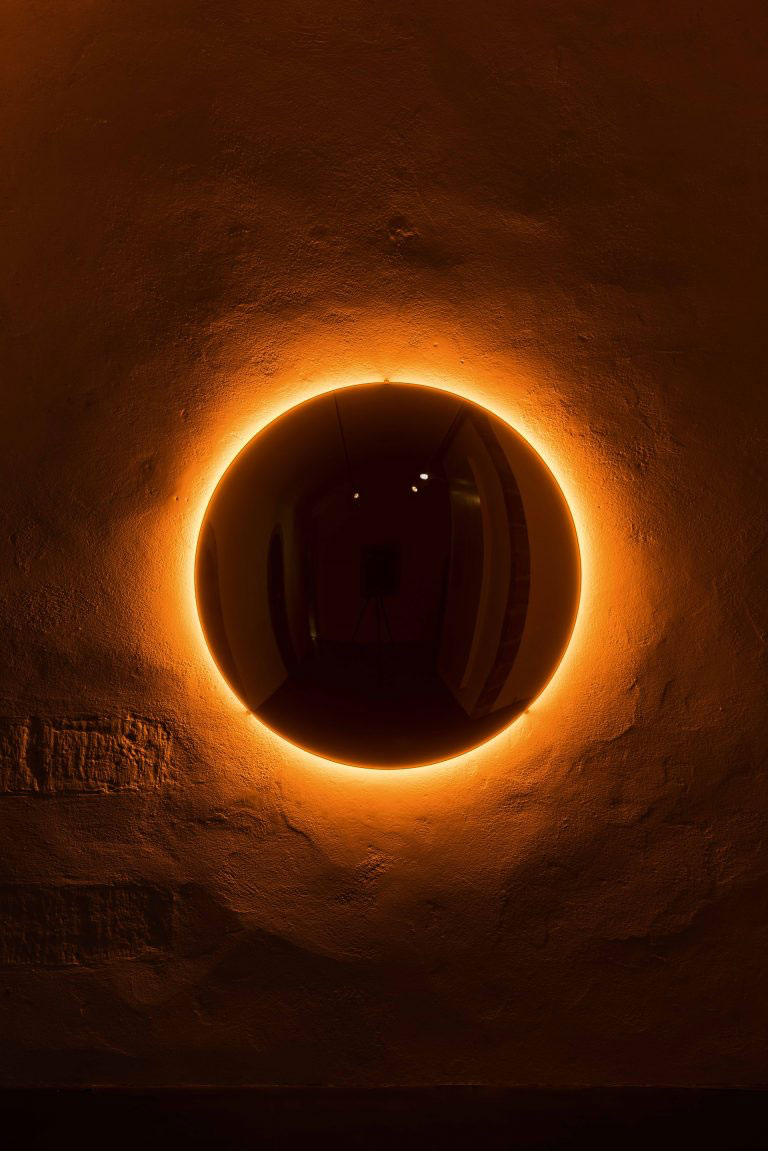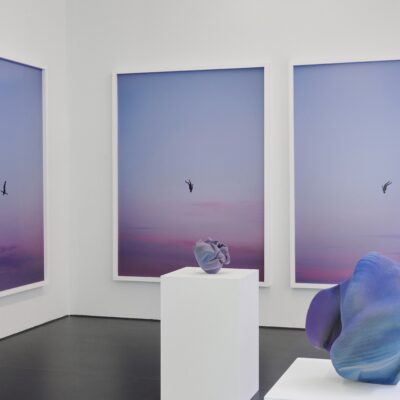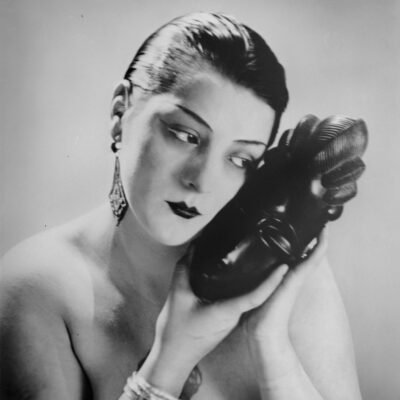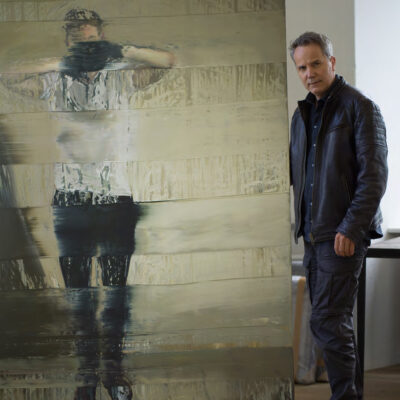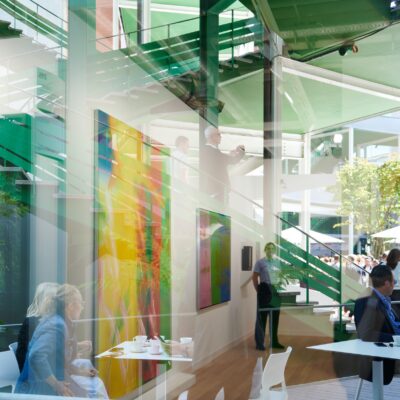All this excitement is understandable as Eliasson is an art-world star. A Danish – Icelandic artist born in 1967 in Copenhagen, he studied at the Royal Danish Academy of Fine Arts from 1989 to 1995. In 1990 he went to New York where he worked as a gallery assistant and studied texts on phenomenology and psychology. He established his studio in Berlin in 1995, and he represented Denmark at the Venice Biennale in 2003.
Later that year he was commissioned to create the installation “The Weather Project” in the Tate Gallery Turbine Hall in London, where he installed a huge sun, with haze machines and a mirrored ceiling. One could see the fog machines, as well as the top of the mirrors from the upper floors of the museum. As stated in the Studio Olafur Eliasson Encyclopedia, with the Weather Project, Eliasson “had quite explicitly shown the interplay of illusion and disillusion and made the deception obvious”. (p 17) Even knowing and realising the deception, viewers were drawn in by the installation, which demanded and received an immediate, visceral reaction.
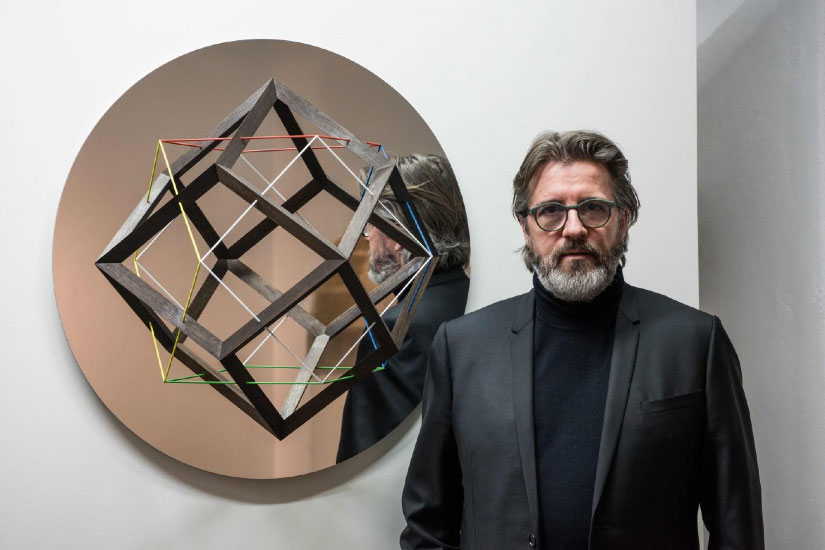
Sixteen of Eliasson’s pieces are on display at the exhibition at Espace Muraille, and they feature many elements in which Eliasson is interested. These include visual perception, movement, light and importantly, the viewer’s participation with the art. The small-scale pieces on view in Geneva can be seen as a sampling of what is being worked on in larger- scale in his studio in Berlin. The Berlin studio is one of the biggest in the art world today employing around 85 artists, architects and technicians on a variety of projects. It is a place for experimentation, where “it is not about finding the fastest way to achieve the final result, but to create a dynamic of experimentation….”( p 11)
Experimentation is a key theme found in the pieces on view in Geneva. For example, Day and Night lava, 2017, features a concave mirror with a dangling lava stone painted black and white spinning in front of it. When one is positioned in exactly the right place in front of the mirror, one sees an enlarged view of the lava stone, like a miniature spinning planet under a magnifying glass. In the same spirit of interaction and experimentation, Solar Replacement (White Dwarf) 2017 appears to refer to a type of star, the white dwarf, which is a star in the process of losing its energy. It will eventually die and become a black dwarf. By moving around the glass sphere one sees the overlapping of the yellow “stars” until they eventually disappear from view.

“Colour window” from 2017 is a kaleidoscopic wall installation of coloured glass that also changes and evolves as one moves around it. As the coloured triangles of glass overlap, for example, blue and yellow are now seen as green. As Eliasson has said ” the kaleidoscope makes us understand through experience that what we see through its mechanism is to a large extent negotiable, relative, and open for engagement.” (p 239)
Kaleidescopes and mirrors also have crystalline surfaces that reflect the viewer, making them feel the work was created just for them, while at the same time, they become part of the piece.
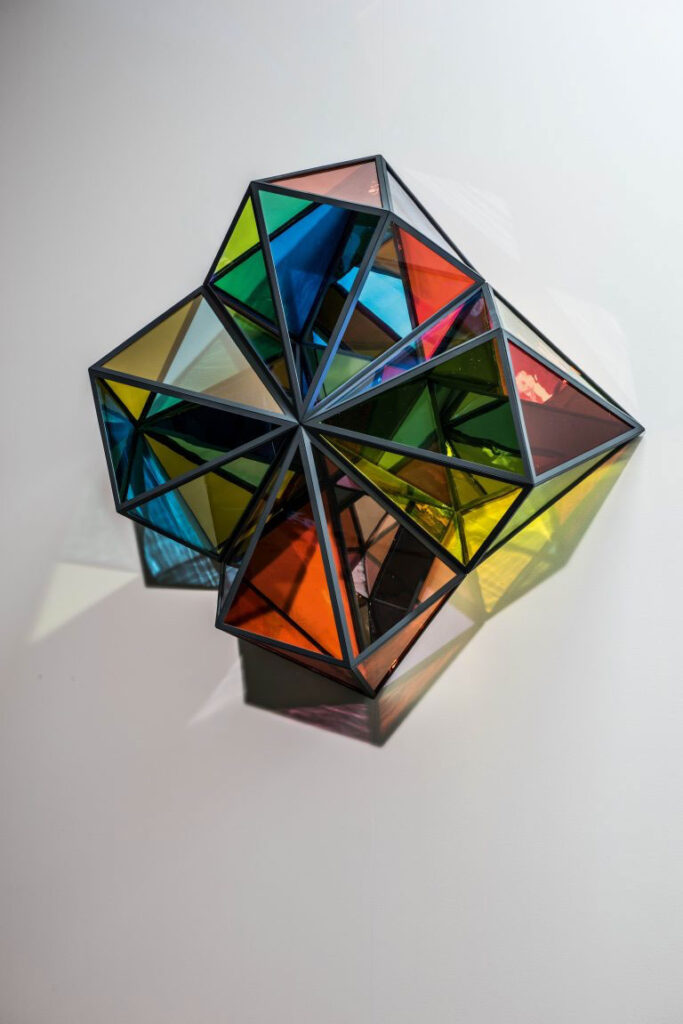
“Black glass sun, 21017” is a small-scale opposite of the “Weather Project” resembling a solar eclipse, rather than the sun. Consisting of a circular convex black glass piece with yellow monofrequency lights shining out from behind it, one sees a reflection of oneself in the mirror while experiencing a kind of reverse sun, with the light blocked by the mirror, and limited visible colours. It draws the viewer in to see what it is, how it works, and to experience the perceived warmth given off by the yellow light.
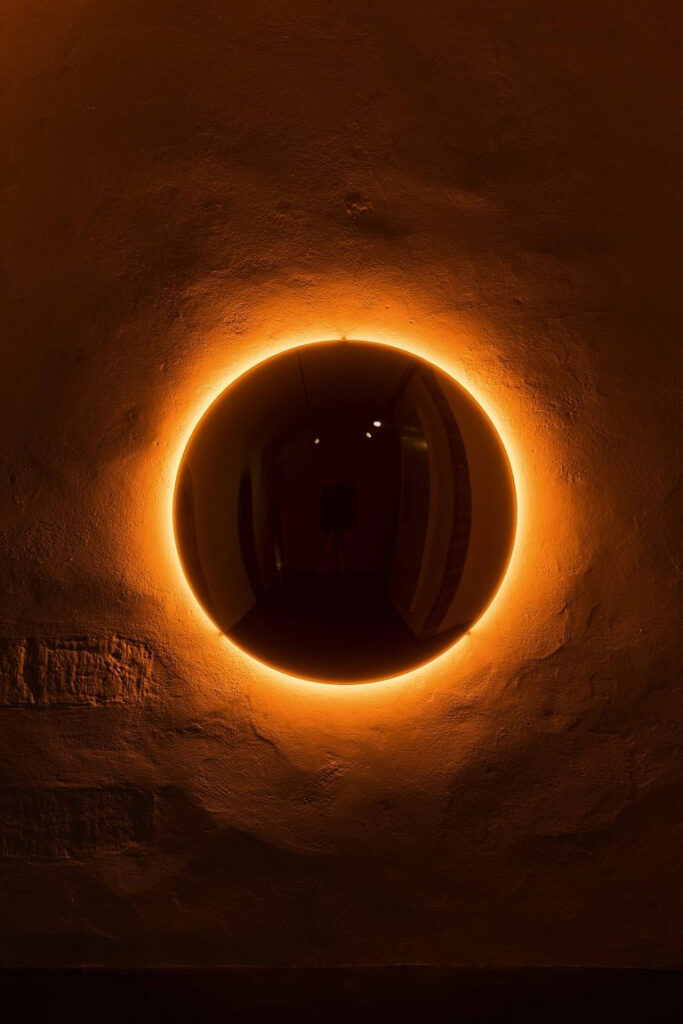
The other highlights of the show are the miniature waterfalls located in a pitch-black side- room. Each sculptural installation is lit by strobe lights so the movement of the water appears to be frozen in time. If one blinks it is possible to see only darkness with the sound of water falling in the background. At another moment, when one blinks again, one sees the waterfall moving in slow motion. Surrounded by icy-looking sculpted plastic, the installations give the impression that the water is freezing cold, while it is actually warm to the touch. The overall effect is of disorientation, where reality depends on the viewers physical reaction and interaction with the piece. This summarises the focus of much of Eliasson’s work, where each piece is experienced and appreciated individually by the viewer.

Olafur Eliasson’s work is at Espace Muraille in Geneva until 28 April 2018.
